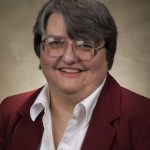Two forward-thinking University of Alabama engineering faculty members have started a research project evaluating the quality of online engineering education in response to the coronavirus pandemic.
Dr. Derek Williamson, civil, construction and environmental engineering associate professor, and Dr. Beth Todd, mechanical engineering associate professor, are working on the project with help from UA’s Institute for Social Science Research. A survey was created and sent during the summer to a database of private and public engineering schools across the country amassed by the duo.

A valid data set would require at least 150 responses, which may be challenging to gather with so much on everyone’s plate, but Williamson and Todd are hopeful to learn more. In addition to their research project, both faculty members were simultaneously preparing for their own virtual classrooms.
“It was something that just had to get done,” Williamson said. “Under the circumstances, and as engineers would say with real-world constraints of time and experience, this was the best we could do, and I think we did a pretty darn good job.”
Todd said she was at an advantage when it came to teaching virtually because the mechanical engineering undergraduate program has been offered online through Bama By Distance, UA’s distance and non-traditional degree path, for about the last five years.
Other than labs, the lessons had already been recorded from actual in-person classes and the course material was ready for student use. With the University’s visionary strategy for online learning, mechanical engineering students had access to high quality lessons rivaling an in-person experience.
Mechanical engineering is the only engineering department at UA that offers a bachelor’s degree from a distance. This left all other faculty 10 days to transition their classes online, including spring break and an extra preparation week before virtual instruction began.
“I think it’s better to think of it as a COVID-driven emergency remote education,” Williamson said, emphasizing that online courses usually take at least a year to create. “We had to develop tools quickly.”
He said a group of faculty in his department came together to discuss best practices and tools to use in their courses. For his classes, Williamson recorded his live video lectures and posted them online for the class. He rescinded remaining tests after spring break and really emphasized projects.
Todd also wrestled with how to give exams to her class. She tried multiple choice and problem solving formats to ensure the students were being appropriately tested on the material they had learned throughout the semester. Another class she taught was senior design where students create a product, but with the machine shop and The Cube closed, students were limited in their options.

“We just had to do presentations on Zoom,” Todd said, adding her power had gone out 30 minutes before the scheduled presentations but returned right in time.
Todd didn’t have an internet connection at home until about 10 years ago when she got sick and had to work from home for a little while. However, she hadn’t used her home internet since then, and at the time campus shut down, she only had a tablet to work on at home.
“I spent a lot of time that first week talking to different colleagues asking them really basic questions about how to set up different electronic communication,” Todd said. “It felt like every day was learning a new piece of software to do something I could do so much more easily in my office.”
Williamson and his wife, an artist who typically teaches in a studio, were both working online from home and it caused him to have to upgrade their internet speed and router.
“I had 100 megabytes per second line, and that wasn’t going to cut it,” Williamson said.
He said students and faculty both had to work to access the appropriate technology for online learning. There was a worldwide shortage of webcams and other devices in great demand during the pandemic, Williamson said. His own laptop died the first day of distance education, but he was able to get a lot of support from the College’s technology services team, specifically from director Cris Porter.
“Expecting all students to have high-speed internet connections is simply not realistic, and it didn’t happen,” Williamson said. “Every faculty had to figure out how to accommodate their students in their particular situations in a way you never would if everyone was on campus and the playing field was completely level.”
He noted that some students had to start working to support their families, and others got sick and were dealing with recovering.
“There are great stories about perseverance of our students and their families that were really inspiring to me. One reason I worked so hard is because they worked so hard,” Williamson said.
Through it all, Williamson and Todd are both interested in examining the data they receive and learn more about the impact this pandemic has had on engineering education across the nation.